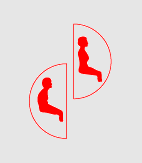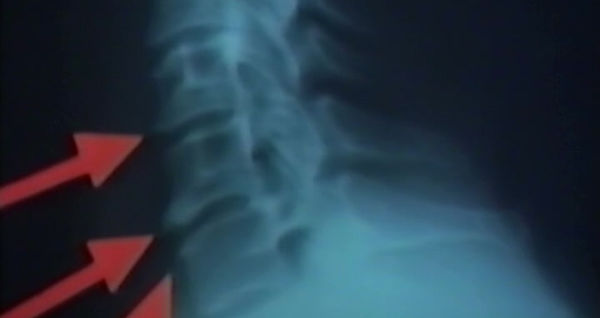Dr. A. Bruges method
The Bruges "therapy" is named after the Swiss doctor Dr. Alois Brügger (1920-2001) named.
Dr. Brügger studied medicine at the universities of Friborg (1942-1945) and Zurich (until 1948), which was followed by extensive clinical activities at home and abroad. From 1960 he practiced as a specialist in neurology and psychiatry in Zurich - Seefeld.
In addition to his practical work, Dr. Until his death, Brügger was an extraordinary and tireless researcher who gave important and lasting impetus to medicine with his research.
The findings of Dr. Bruges are essential for understanding and interpreting many common ailments affecting muscles and joints. Therapeutic applications can only be based on this. For this reason there is no explicit Bruges therapy, as was propagated in the 80s and 90s. The findings of Dr. Bruges are primarily used for diagnostics.
Today most of the people who know about Dr. Bruges heard about posture. Dr. Brügger has dealt intensively with this topic and worked out important connections between pain and posture.
This is also confirmed by the logo of Dr. Bruges , which shows two seated people in two sitting postures.
For a deeper understanding of these interrelationships, however, one must know the career path and the guiding principles. Otherwise the equation Bruges = attitude would be too superficial a simplification that does not do justice to the work of this brilliant researcher.
The following is the journalistic career of Dr. Bruges presented. It is a coherent path that shows how an originally recognized biological phenomenon could be understood and implemented more and more clearly and in a more differentiated manner.


literature
Historical
In 1958 A. Brügger received his doctorate in medicine with his dissertation “About tendomyosis”.
This dealt with questions and interpretations of symptoms of the phenomena appearing as “muscular rheumatism”. The term “tendomyosis” is newly introduced at this point and differentiated from other terms. Dr. Brügger interpreted the muscle pain as “functional” and not structurally caused, ie that the pain is linked to the functions of the muscles and could not be interpreted anatomically or humorally and pathologically.
To distinguish it from the radicular symptoms, Dr. Brügger also used the term "pseudoradicular" in this work.
Even then, Dr. Brügger to the associated “trigger points” (see trigger point therapy ). A concept which only became known in Switzerland decades later (in the 80s). In 1958 the work was published in the “Deutsche Medizinische Wochenschrift”.
In this thesis by Dr. Brügger created the term tendomyosis and remained the central term in his primarily diagnostic concept throughout his life. Two further publications followed in 1960 and 1962, in which the topic was deepened. Documenta Geigy appeared in the Acta rheumatologica series as No. 18 and No. 19 with the title: “About vertebral, radicular and pseudoradicular syndromes: Part I and II) .
With this, the second important term in the Bruges concept - the pseudoradicular syndrome - was established and further elaborated. This term and the symptoms associated with it are still part of clinical usage today. Unfortunately, many medical professionals no longer know who they owe this term to.
In a further monograph, which appeared in 1965, a further deepening took place. The booklet entitled “Pseudoradicular Syndromes of the Tribe” was published together with Dr. Ch. Rohnheimer - a longtime companion of Dr. Bruges - written.
In 1971 a monograph was published under the title “ The sternal syndrome ”, in which for the first time completely new connections between posture and pain were described and important aspects of the importance of an optimal one were worked out. In the same book, Brügger introduced the term “nociceptive somatomotor blocking effect = nsB” .
To crown the previous work of Dr. In 1976, Brügger published the more than 1000-page book entitled “ The diseases of the musculoskeletal system and its nervous system ”, in which the various manifestations of the nsB - the nociceptive somatomotor blocking effect are presented. The book is a masterpiece of applied cybernetic thinking and is highly complex. It still offers interesting and still unknown insights into the interactions between movement and the nervous system.
In 1982 the Research and Training Center (FSZ) Dr. Bruges founded.
During this time, Dr. Brügger developed his concept of the “ doctrine of functional diseases ”. To research and expand the concept, the International Working Group for Research into Functional Diseases of the Musculoskeletal System - IAFK - was founded in 1985.
In a critical review, which was presented at a symposium in 1983, Dr. Bruges the need for this broader term.
From this point on, functional diseases are understood to be “.. reflexively painful disorders of the functions of the musculoskeletal system…” In order to present the steadily growing knowledge to a wide audience, it was decided to publish a magazine . This appeared under the name “ functional diseases of the musculoskeletal system ” from May 1986 and was discontinued in 2004.
The life's work of Dr. A. Brügger was completed with the publication of the “ Textbook on functional disorders of the musculoskeletal system” in 2000 .
This textbook is the synthesis of the teaching of functional diseases and can be seen as an extension of the “diseases of the musculoskeletal system”, in which many thoughts are formulated in a contemporary way with another language. With the passing of Dr. Alois Brügger in 2001 ended this intensive research life.

Das Sternale Syndrom

Biegespannungen

Fussfertigkeit einer Armlosen

Intervertebrallöcher

Brügger

Biegespannungen









